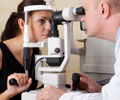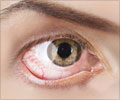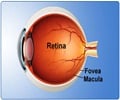
The affordable retinal examiner is a phone-case-sized add-on that turns an iPhone or Android smartphone into a fundus camera capable of taking high-definition images and video of the eye for health screening and evaluation.
The device was designed by Dr. Andrea Russo, an ophthalmologist and researcher at the University of Brescia, Italy. It can be used to identify a variety of eye health conditions, including the leading causes of blindness: glaucoma, diabetic retinopathy, and macular degeneration.
"We are excited to help millions of people, many in underserved populations, receive proper eye care with our low-cost retinal screening capability. D-EYE's telemedicine applications will transcend traditional spatial boundaries, allowing specialists worldwide to assist and collaborate on diagnoses, which is especially impactful in areas where resources are limited or when patients are unable to travel," said D-EYE CEO Richard Sill.
The portable ophthalmoscope capable of digitally imaging the inner lining of the eye and offers an up to 20-degree field of view for easy observations without any disturbing corneal glare.
The device’s ergonomic design makes it particularly beneficial for use with children, bedridden patients, and even animals.
Advertisement
“For students, it’s amazing because the ordinary ophthalmoscopes are not easy to use, and you also have to lean in towards the patients, which can be inconvenient for many reasons. With this, you can move just your hands, not your face, towards the patient and obtain images of the retina,” Dr. Russo said.
Advertisement
Source-Medindia









